Cooley Dickinson leaders say hospital is emerging from a ‘state of disruption’
| Published: 07-19-2023 8:47 PM |
NORTHAMPTON — As Cooley Dickinson Hospital gets ready for a ceremony Thursday celebrating its new emergency department building, along with the hospital’s 10-year anniversary of its partnership with Mass General Brigham, President and Chief Operating Officer Lynnette Watkins said the industry is in a “state of disruption” following the COVID-19 pandemic.
In a wide-ranging interview Monday with the Gazette’s editorial board, Cooley Dickinson officials said that disruption has come in the form of staffing shortages, increased mental health problems among patients, social inequities, burnout, and an older and sicker population of patients. These same issues are affecting hospitals across the country, Watkins said.
“COVID unmasked inequities in our society,” said Jeff Harness, chief community relations and communications officer at Cooley Dickinson. “Things were happening beyond the hospital, but ultimately those problems came into the hospital.”
Foremost of those concerns, right now, is workforce shortages. When asked to name three to five gaps the pandemic revealed at Cooley Dickinson, Watkins responded, “workforce, workforce, workforce, workforce.”
“COVID crushed the nursing profession,” said Cynthia Marlin, vice president of patient care services and chief nursing officer. “People had the opportunity to assess their savings and retire early … When nursing instructors retired, colleges reduced the sizes of their nursing classes.”
Now, as the pandemic eases, recruiting and retaining its workforce is a primary goal for the hospital.
“We are seeing that the devotion isn’t to one organization. It’s to work-life balance, pay structure, training programs,” Marlin said.
In keeping with its retention goals, Marlin said the hospital is now allowing nurses to come back post-pandemic with fewer hours, or daytime hours only, in hopes of creating a more appealing work environment where workers will stick around.
Article continues after...
Yesterday's Most Read Articles
 A Waterfront revival: Two years after buying closed tavern, Holyoke couple set to open new event venue
A Waterfront revival: Two years after buying closed tavern, Holyoke couple set to open new event venue
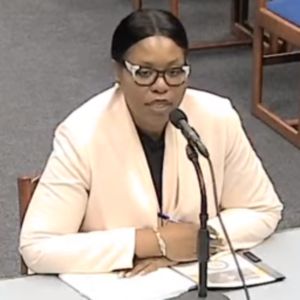 Island superintendent picked to lead Amherst-Pelham region schools
Island superintendent picked to lead Amherst-Pelham region schools
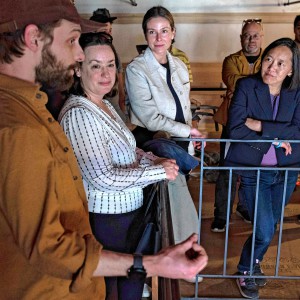 Music key to Northampton’s downtown revival: State’s top economic development leader tours city
Music key to Northampton’s downtown revival: State’s top economic development leader tours city
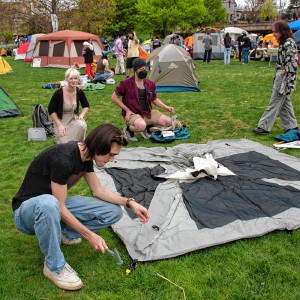 Pro-Palestinian encampment disperses at UMass, but protests continue
Pro-Palestinian encampment disperses at UMass, but protests continue
 Area property deed transfers, May 2
Area property deed transfers, May 2
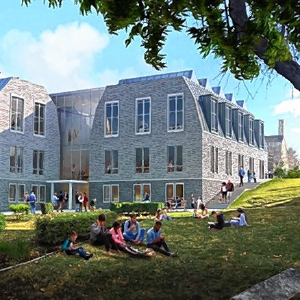 Amherst council hears call to scale back Jones work
Amherst council hears call to scale back Jones work
Cooley Dickinson is also strengthening its relationship with universities and community colleges, including Bay Path, Westfield State, and the UMass Amherst College of Nursing, which received a $21.5 million gift in 2021.
A program at Bay Path provides employees at Cooley the opportunity to earn college credits, become a certified nursing assistant, or complete their master’s degree in nursing, with clinical hours available at the hospital.
And piloting this fall is a new “clinical match program” at UMass Amherst, where nursing students will apply and be matched to Cooley Dickinson. From there, students will complete their nursing clinical rotations within the Cooley Dickinson system, which will simultaneously create a pipeline of qualified graduate nurses.
“This is very fertile ground,” Marlin said about higher education.
For the hospital’s fiscal year ending in October 2019, there were 412 registered nurses employed at the hospital. As of now, there are 433.
Watkins said the nursing labor shortage has forced the hospital to hire “premium labor and traveling nurses” to fill the gap. Currently, the hospital has just 45 of these employees and is working on bringing that number down. The cost of a traveler is three times the cost of a regularly employed nurse.
In addition to nursing shortages, the hospital is experiencing workforce deficiencies in other areas, including surgical technologists, physicians, medical assistants, CT technologists, patient care/nursing assistants and environmental services staff, officials said.
Part of creating a better working environment to retain employees has to do with upgrades to the physical space. The hospital’s new emergency room, a $19 million investment, totals 7,700 square feet, adding to an existing footprint of 15,620 square feet. The ER will also gain six beds — two for behavioral health patients, two private/isolation, and two for whatever purpose patient care demands. It’s an expansion that Watkins describes as “40 years overdue.”
“I firmly believe you feel like the environment you work in,” Marlin said. “The staff deserves this beautification.”
The new room will be set up in a “racetrack” configuration, with the nursing equipment at the center of the room and beds lining the outer oval. As opposed to the former “pods” configuration, where patients were divided into more isolated sections, the new setup will allow for better line of sight for both staff and patients.
The main goals were “space, safety and staff satisfaction,” according to Watkins.
With more beds, the emergency department will have greater capacity to see patients and decrease wait times, Watkins noted.
Moreover, the hospital uses a so-called “enterprise asset management” system to analyze metrics including wait times, turnaround times and efficiency, as part of its collaboration with Mass General Brigham.
“As we age and get older and sicker, we’re going to need more care and we’re going to need to be good stewards of our resources,” Watkins said.
Another problem exacerbated by the pandemic that Cooley Dickinson is now dealing with is a sharp increase in patients with mental health issues, especially young patients. According to Watkins, the hospital is working toward increasing the number of beds for psychiatric patients, recruiting more providers, and working with community partners to get patients the care they need.
In terms of finances, per the state’s Center for Health Information Analysis (CHIA), the hospital had an operating surplus of $44 million, with its total net assets increasing more than sixfold from 2017 to 2021.
But Watkins said the CHIA surplus numbers do not tell the full picture, and that the hospital isn’t sitting on $44 million in extra funds. Cooley Dickinson is a system with three main interrelated parts — the hospital, the Medical Group (which is made up of doctors and advanced practice clinicians), and the Visiting Nurse Association and Hospice. Surplus money was invested in the other two parts of the system, the Medical Group and VNA.
“Whatever resources that come in are taking care of the patient … at the end of the day, that’s what it’s all about,” Watkins said.
“The pandemic, followed by supply chain problems, and inflation have been very disruptive to operations and finances,” said Watkins. “We continually look for ways to be more efficient, manage costs, and improve patient outcomes. We are emerging from these challenges, but will need to carefully manage resources into next year.”
Maddie Fabian can be reached at mfabian@gazettenet.com or on Twitter @MaddieFabian.
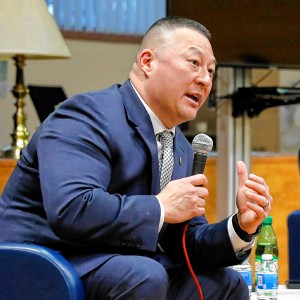 Amherst council confirms Gabriel Ting as police chief
Amherst council confirms Gabriel Ting as police chief
